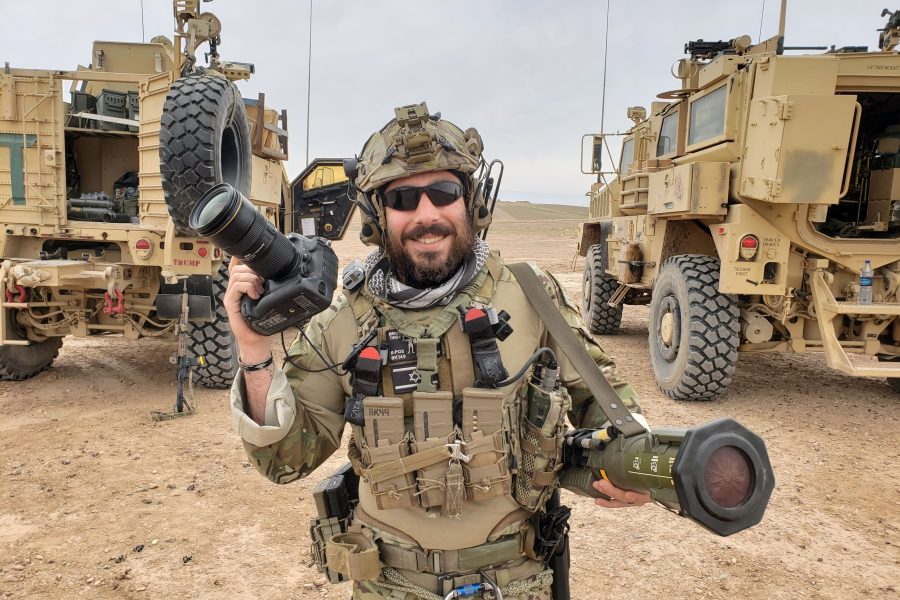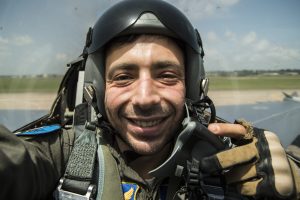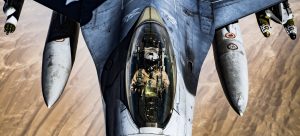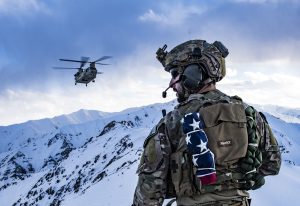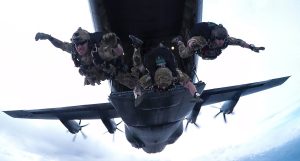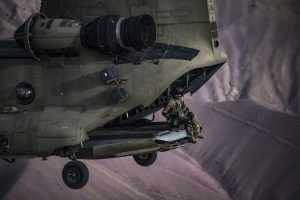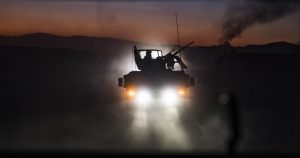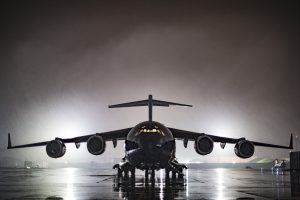Barely a week after Russia launched its full-scale invasion of Ukraine on Feb. 24, 2022, Air Force Master Sgt. Gregory Brook led the first non-government U.S. surgical team on the ground into the Eastern European country.
Out of an old Soviet gymnasium in an undisclosed location, the team from the nonprofit Global Surgical and Medical Support Group (GSMSG) taught tactical combat casualty care to local civilians. About 50 Ukrainians showed up the first day, then 150 the next, and it kept growing.
“It was packed to the gills, so we started running multiple classes a day,” Brook told Air & Space Forces Magazine. “I think as of [July 24] we’ve trained about 60,000 Ukrainians directly.”
A reservist with the 4th Combat Camera Squadron, Brook went to Ukraine in his civilian role as operational deployment director for GSMSG. He still receives messages from Ukrainians who used the skills taught by him and his team to treat those injured in the conflict.
“We’re a year and a half into this war and people are still carrying that forward and training other people,” he said. “It became this kind of exponential thing that continues to pay dividends in terms of saving lives.”
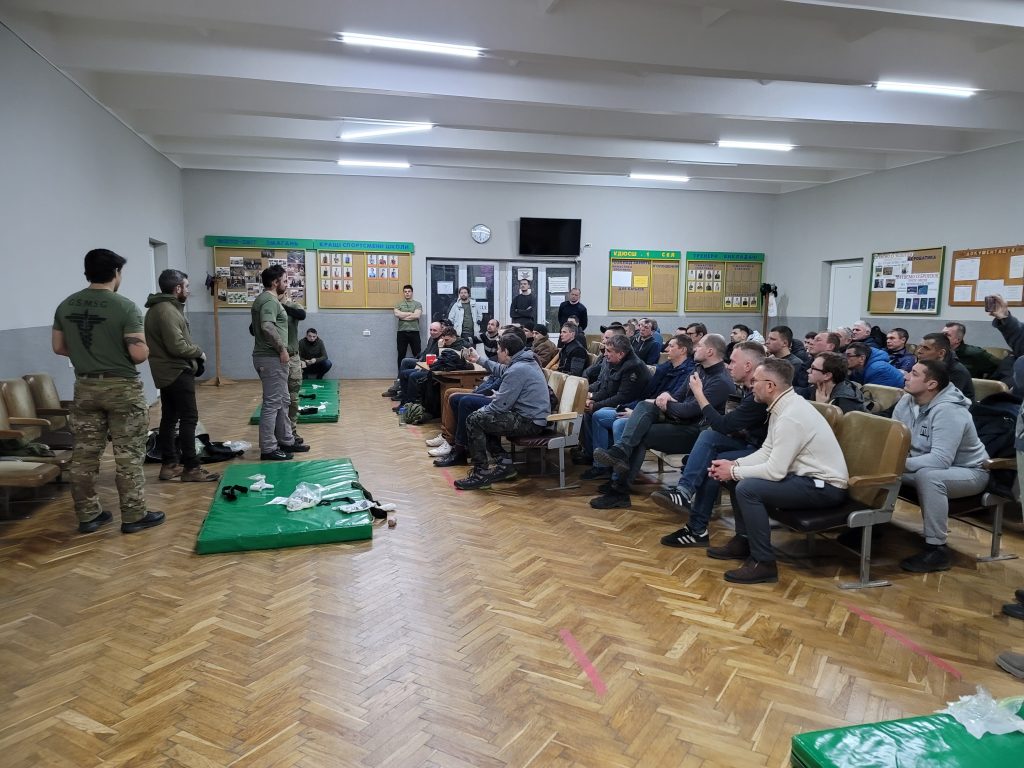
Ukraine is just the latest in a long line of conflict zones where Brook has worked, both in his civilian role with GSMSG and as a Combat Camera Airman. He embedded with Army Special Forces teams conducting counterterrorism operations in Afghanistan; helped refugees in Syria; set up medical clinics in Guyana; and covered humanitarian aid efforts in east Africa. When the chaotic U.S. withdrawal from Afghanistan kicked into high gear in August 2021, he ditched a vacation in Spain so he could help organize flights for evacuees with GSMSG.
“In two days I went from being on vacation in Barcelona to being in Afghanistan … again,” said Brook, who witnessed service members, veterans, and civilian volunteers go above and beyond to help strangers in need during the evacuation.
“Everybody was doing everything they could to help everybody else out,” he said.
Life before ‘Service before self’
Growing up the son of eastern European immigrants in a poor neighborhood in Boston, Brook had low grades, a hot temper, and no plan for life. He joined the Air Force in 2006 partly for steady employment, health care, and other benefits.
“Where I’m at now in my life, I really wish I could say I was motivated by patriotism and these ideals of service, but that would be a lie,” he said.
Brook went from carrying cases of beer as a Boston bartender to carrying F-22 fighter jet parts as an avionics maintainer. More importantly, he worked alongside Airmen who had fought in Iraq or Afghanistan and lost friends there.
“In that period of time, terms like duty, honor, and the Air Force core values stopped being nebulous ideological concepts,” he said. “They became things I saw in people who lived these values. They exemplified them, and I want to be that kind of person.”
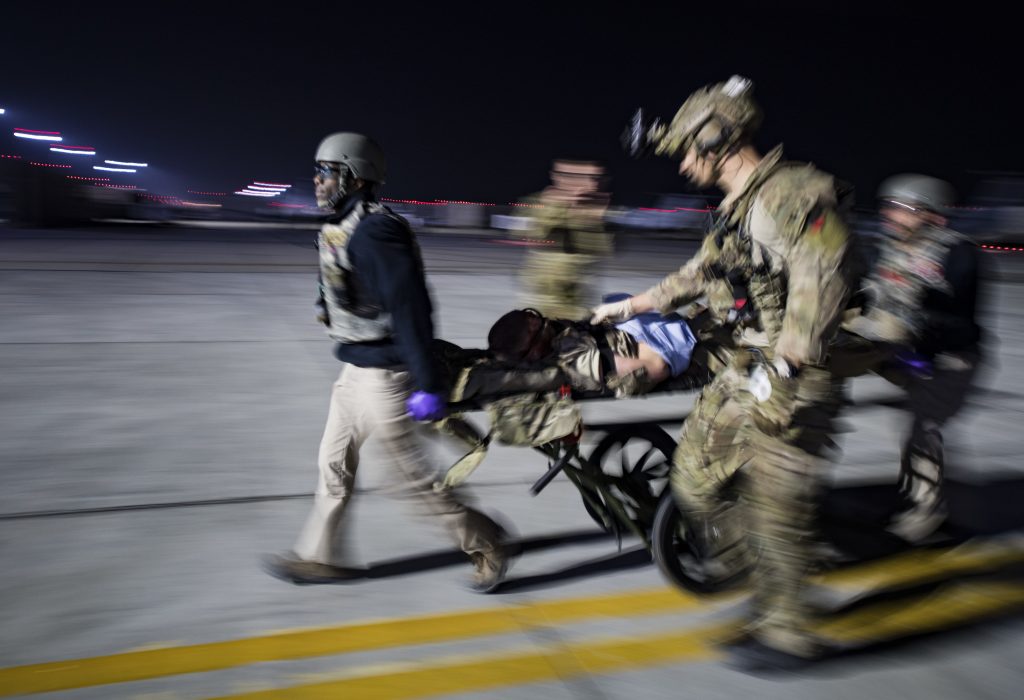
Brook grew up snapping pictures around Boston, so when he found out he could take photos for the Air Force in the public affairs career field, he leaped at the chance. He then honed his skills to apply for Combat Camera: combat-ready public affairs Airmen who must be skilled with both rifles and cameras. In 2014, he was accepted.
“It has been far and away the most amazing job I’ve ever had,” he said.
Work towards a solution
Throughout his travels in the Air Force, Brook said he regularly saw service members and civilians go above and beyond to help the local populations—a security forces Airman trying to get school supplies for children living in a refugee camp in northern Syria, or pararescuemen volunteering to set up medical clinics in east Africa.
“That’s something you’ll see any time you’re deployed: people look for ways to help the local populations out … which I think speaks to the quality of American service members generally,” Brook said.
It was during a deployment in Syria that Brook first heard about GSMSG, a group of health care providers, many of whom are current or former service members, who deploy to conflict zones and humanitarian disasters to treat patients and train local providers. Brook got involved and worked with the group in Guyana, Afghanistan, and Ukraine.
Even beyond that aid, Brook is now working with British service members and the Ukrainian Ministry of Defense to develop a training program for troops to identify symptoms of post-traumatic stress. Mental health is a personal topic for Brook, who has a box in his desk drawer filled with 30 metal bracelets, each commemorating a friend lost to combat or suicide.
“There are a lot of people who should be alive that are not for any number of psychological reasons,” Brook said. “I think that the faster we can figure out what’s causing this, the faster we can work towards a solution and pressing it.”
Figuring that out means understanding both the science of mental health and the policies that shape its treatment in both the Department of Defense and the Department of Veterans Affairs. Brook is currently studying neuroscience and behavior at Columbia University’s School of General Studies, and after he graduates, he said he may study law or medicine.
“I’m interested in ‘What’s the way in which I’m going to be able to have the most impact on this,’” he said. “The goal is to end the veteran suicide epidemic, and my education is in furtherance of that goal.”
Earlier this year, Brook was tapped to receive a Tillman Scholarship. Named after Pat Tillman, the professional football player-turned Army Ranger who was killed by friendly fire in Afghanistan in 2004, the scholarship is awarded to spouses, veterans, and service members who want to make the world a better place.
“The reason I wanted to become a Tillman scholar was primarily because of that network, that amazing group of people who are interested in solving so many problems,” he said.
It all goes back to what inspired Brook to stay in the military in the first place.
“From my perspective,” he said, “the point of military service is how you can help other people.”
